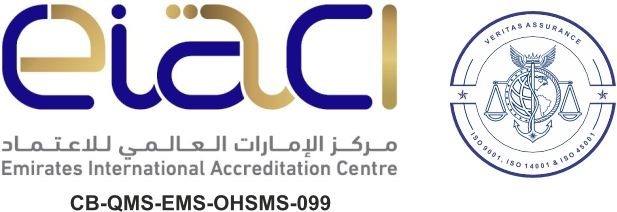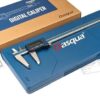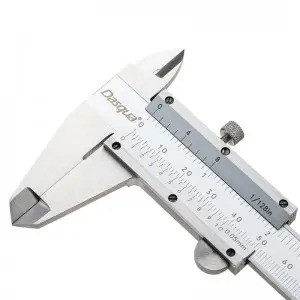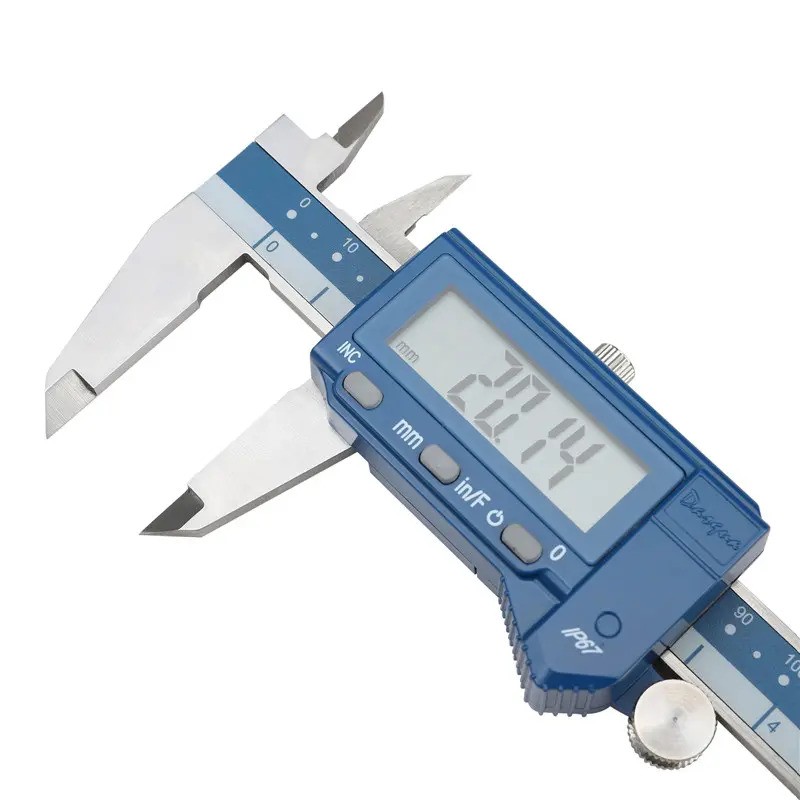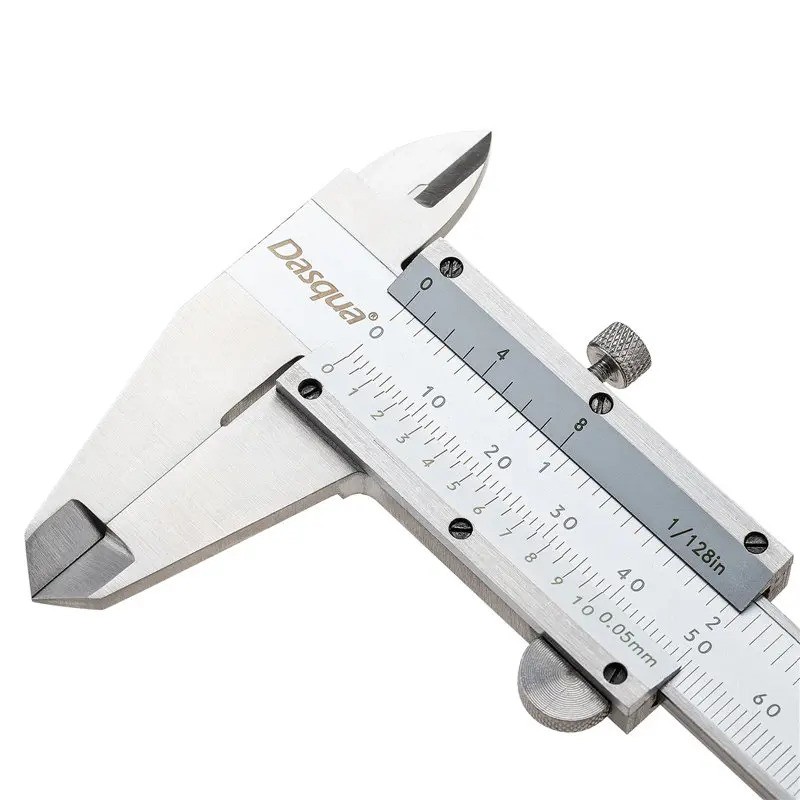Caliper Calibration Services
Caliper Calibration
In modern manufacturing, inspection, and quality assurance environments, calipers are indispensable tools for measuring dimensions accurately and reliably. Whether you’re measuring external diameters, internal bores, depths, or steps, irregularities in caliper accuracy can lead to out-of-spec parts, rework, or production losses.
At Quality Technical Services (QTS Service, UAE), we specialize in caliper calibration and verification under rigorous metrology standards. We provide calibration for digital, vernier, dial, depth, analogue and hybrid types, coupled with traceable certificates, fast turnaround, and on-site or in-lab service.
Below is an in-depth look into caliper types, calibration methodology, and our offering in the UAE.

Types of Calipers & Their Calibration Considerations
Digital Caliper
Overview & Advantages
A digital caliper uses an electronic linear encoder to display readings on an LCD. It often supports metric and imperial units switching, zero setting at any location, and hold functions.
Digital calipers are among the easiest to read and use, reducing human error. However, they depend on proper zeroing and are subject to errors if the electronics or encoder strip is damaged or contaminated.
Calibration Notes
The zero position and span must be verified.
The response linearity across the full measuring range is checked.
The “as-found / as-left” readings are documented.
Any drift, backlash or hysteresis errors are assessed.
The display logic (switching units, incremental reading) is checked for consistency.
Vernier Caliper
Overview & Advantages
The classic vernier caliper uses a sliding main scale with a vernier scale for fractional readings. It is entirely mechanical, with no electronics, making it durable and robust.
Vernier calipers are immune to electronic failures and interference, but reading them accurately requires practice, and parallax error or misreading the divisions is common.
Calibration Notes
Zero alignment must be verified and zero error compensation documented.
The scale readings at predetermined gauge block points are compared to reference standards.
Linearity, repeatability, and measurement uncertainty must be assessed.
Any wear, burrs, or damage to jaws must be checked and corrected.
Zero-error correction is recorded for user reference.
Dial Caliper
Overview & Advantages
A dial caliper uses a mechanical dial with rack-and-pinion to provide a direct analog pointer reading for fractional increments.
Reading dial calipers is easier than vernier models, but they contain more moving parts and are sensitive to dust, dirt, and mechanical wear.
Calibration Notes
Zero reading when closed must be confirmed.
Dial backlash, hysteresis, and pointer movement must be verified.
Gauge block reference points are used to compare readings.
The dial mechanism is tested for smoothness and repeatability.
Full measurement range is verified for accuracy.
Digital Depth Caliper
Overview & Advantages
A depth caliper (or depth gauge) measures the depth of holes, slots, or recesses. The digital variant uses an electronic sensor and display for ease of use.
Calibration Notes
The depth rod zero point must be verified.
Known depth standards or gauge blocks are used for accuracy checks.
Linearity, repeatability, and angular error of the depth rod must be assessed.
The mechanism is checked for drift or backlash.
Analogue Calipers
Overview & Advantages
Analogue calipers refer to non-digital types such as vernier or dial. They are rugged, simple, and immune to electronic failures.
Calibration Notes
Zero offset must be verified.
Gauge blocks are used to check accuracy across the range.
Repeatability and wear are assessed.
Reading methods are validated to ensure correct interpretation.
Our Caliper Supply & Calibration Lab in UAE - Quality Technical Services UAE
As a trusted calibration provider in the UAE, Quality Technical Services (QTS Service) offers a full suite of caliper supply and calibration services.
Our Capabilities
Dimensional calibration for calipers, micrometers, gauges, and height gauges
Supply of calibrated calipers and accessories
On-site and in-lab calibration options
ISO/IEC 17025 traceable calibration certificates
Fast turnaround and flexible scheduling
Technical consultation and support
Calibration recall management with due-date reminders
Why Choose QTS Service?
Accredited dimensional calibration lab in the UAE
Expertise across all caliper types
Combined supply and calibration services for convenience
Customer-focused service with commitment to traceability and quality
If your facility in Dubai, Abu Dhabi, Sharjah, or elsewhere in the UAE needs calibration of calipers or other tools, QTS Service is your partner of choice.
Contact us at +971 54 244 7390 or sales@qtsservice.com for more details.
Contact Quality Technical Services UAE today to discuss your calibration needs and discover how we can help you achieve the highest level of accuracy, reliability, and compliance in temperature measurement.
At Quality Technical Services (QTS Service), we not only calibrate calipers but also supply a wide range of high-quality measuring instruments to meet diverse industry needs. From digital calipers, vernier calipers, dial calipers, digital depth calipers to analogue calipers, we provide both the equipment and the calibration service under one roof. Every caliper supplied by QTS is delivered with a traceable calibration certificate, ensuring that your tools are ready for immediate use in production, inspection, or quality control. By combining supply and calibration, we help our clients in the UAE save time, reduce vendor dependency, and maintain confidence in the accuracy of their measurement instruments.
Typical Calibration Procedure
- Visual Inspection
Check for physical damage, burrs, or corrosion
Clean the instrument carefully
Ensure smooth jaw movement - Zero Test
Close jaws gently and check zero reading
Record zero error as “as-found” - Reference Standards
Measure against gauge blocks at multiple known lengths
Record deviations - Linearity & Span Test
Verify accuracy across the entire range - Repeatability Test
Take multiple readings to check stability - Adjustment & Repair
Make corrections where possible
Re-test to confirm - Final Reporting
Issue calibration certificate with details
Apply calibration sticker - Post-Calibration Handling
Provide user guidelines for proper handling and storage
Schedule reminders for next calibration



